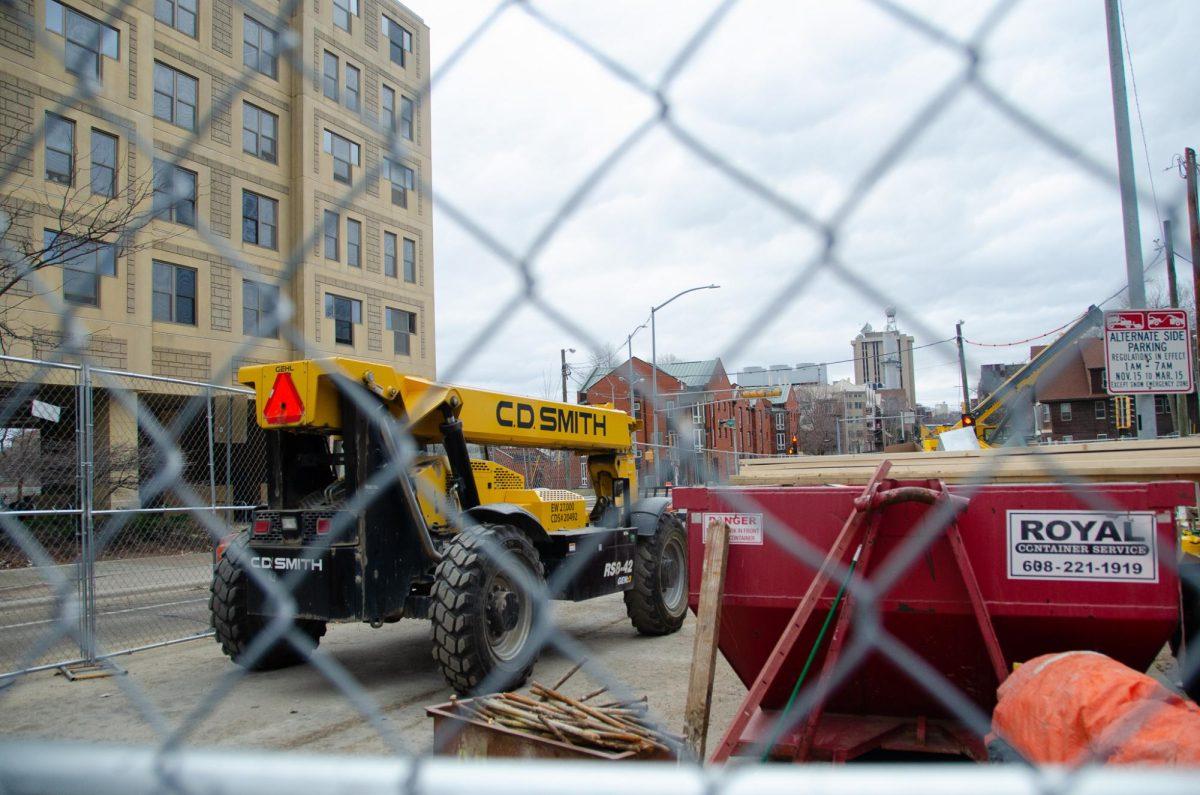Evidence of Madison’s rapid growth can be felt everywhere in the city — shiny new apartments towering above State Street, surging rent prices, and an expanding public transportation network.
Yet not all growth comes without cost. For developers fixated on building modern profit-maximizing residential and commercial spaces, existing historical landmarks often come directly into their crosshairs. Consequently, the traditional fabric of urban Madison has begun to unravel across the city.
Recently, Hovde Properties received permission to tear down the Mifflin Arcade — Madison’s first shopping center and an important historical landmark, according to The Cap Times. Completed in 1908, the Mifflin Arcade’s once-beautiful facade has since fallen into disrepair. In place of this Hovde will build 5 single story commercial buildings that as of now don’t have specific plans for usage.
As the Mifflin Arcade isn’t technically defined as a historical landmark by classification, the building wasn’t able to be protected under municipal planning rules. But, after public pressure, advocates for preservation were able to lobby for some aspects of the building to be preserved, according to The Cap Times.
This story is not unique to Mifflin St., either. Demolition of old buildings to develop new commercial spaces is a common pattern repeated throughout a number of neighborhoods in Madison, according to The Cap Times. On State Street for example, there is approval for mixed-use projects that demolish the businesses residing there, according to the Wisconsin State Journal. Businesses have been forced to move or close and new structures are being put up that many believe take away from the character of Madison as a city.
This loss of character has the potential to affect not only the architectural aesthetic of the city, but also the culture. Important locations help bridge the gap between past and present. Buildings are a symbol of history, and tearing them down erases entire swaths of urban identity.
Not to mention, the displacement that occurs because of these ‘improvement projects’ can uproot entire communities. Since projects like the Mifflin Arcade don’t even have a plan for what they want to do with the space, a hasty demolition is irresponsible at best. If there is going to be destruction, city planners should force developers to disclose concrete plans for the future of a new development project. Historical infrastructure should not be rendered inconsequential, ready to be torn down at a moment’s notice.
These new projects detract from the appeal of Madison as it is known to be a city with a rich history and appealing architecture. It draws people in and can be a deciding factor in whether or not it is a place to settle down or live in. Turning the city into a landscape of stark, uninviting structures takes away the appeal for residents and tourists, and demolishes what makes Madison so special.
Recently, the Hovde Properties CEO Eric Hovde, entered the U.S. Senate Race against incumbent Tammy Baldwin. The implications of this could be very drastic for Madison. His campaign has been decidedly focused on reframing his image as an affluent figure and more on relating to the majority of voters. Many of Hovde’s opponents see him as an out of touch figure who has a lot of money and uses that position and privilege to bolster the standing of people in his arena. Simply put, he will forget about the working folks once in office.
A Hovde ascension into national politics has the potential to derail the culture that Madison has supported since its inception. Madison is known for its charm and its community. Whoever holds this office has tremendous influence to shape how that community looks. If Hovde is reshaping the way Madison looks now, architectural preservation would certainly not be at the top of his docket as a U.S. Senator.
While it is important to have progress, it isn’t necessary to have destruction. There is a middle ground to find that not only preserves the integrity of Madison, but aids in satisfying the development needs that growing cities demand.
Part of this duty falls on the shoulders of members of city government. City leaders have the responsibility of not only preservation policies, but also encouraging mixed-use development. This certifies that there is somewhat of a blend between old and new with special consideration for character.
Additionally, the government of Madison needs to remain sensitive to the desires of its residents. The human face beyond urban development and demolition projects are often forgotten in the financial calculus. These are the people who have their homes and businesses in the buildings that are either celebrated or destroyed. Their destruction destroys not only the foundation of the physical building, but the livelihoods of the people who depend on it.
That is why design guidelines are so important. These architectural standards can promote that fusion between old and new. This preservation can be achieved through reuse and simultaneous long term planning. Certifying that the new projects have a purpose that improves the lives of those in the community is critical to achieve this.
By implementing these strategies, a balance can be achieved that sustains local identity and culture while supporting new developments. Preserving the architecture isn’t just about beauty, but about principle. It is about maintaining its diverse landscape that represents the rich history that is woven in these buildings. It is about honoring the past and allowing the present and future to respectfully develop within.
Sammie Garrity (sgarrity3@wisc.edu) is a freshman studying journalism and political science.



